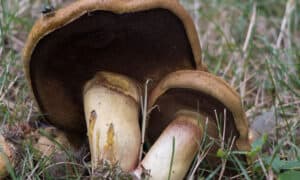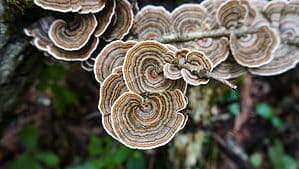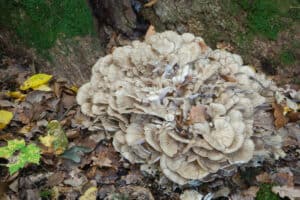If you enjoy foraging mushrooms in temperate woodlands of Europe, we highly recommend you know how to identify them and thus avoid fool’s mushrooms.
In this guide, we’ll cover its fungal classification, where it grows, how to identify it, and what makes this mushroom so deadly to humans.
So, without further ado, let’s jump in!
Fool’s Mushrooms: Fungal Classification
Fool’s mushroom, also referred to as the European springtime destroying angel (along with a couple of other related species), is a highly poisonous member of the infamous Amanita genus of mushrooms. Its scientific name is Amanita verna and it belongs to the Amanitaceae family of mushrooms in the Agaricales order. This family of mushrooms contains other infamously poisonous mushrooms such as death caps (Amanita phalloides) and the European destroying angel (Amanita virosa).
Where Does It Grow?
Amanita verna grows in various deciduous and conifer forests across temperate regions of Europe. According to the most recent research supported by genetic sequencing, it does not occur in North America, and field guides or reports that claim it do are likely misidentifying very similar-looking amanitas, such as the Eastern destroying angel, Amanita bisporigera.
Fruiting in the Spring, fool’s mushrooms grow from the soil near trees it has mycorrhizal relationships with. Like the majority of mushrooms in the Amanita genus (besides some species in sect. Lepidella), Amanita verna derives its nutrients from the roots of trees with which it has a symbiotic plant-fungi relationship (mycorrhizal).
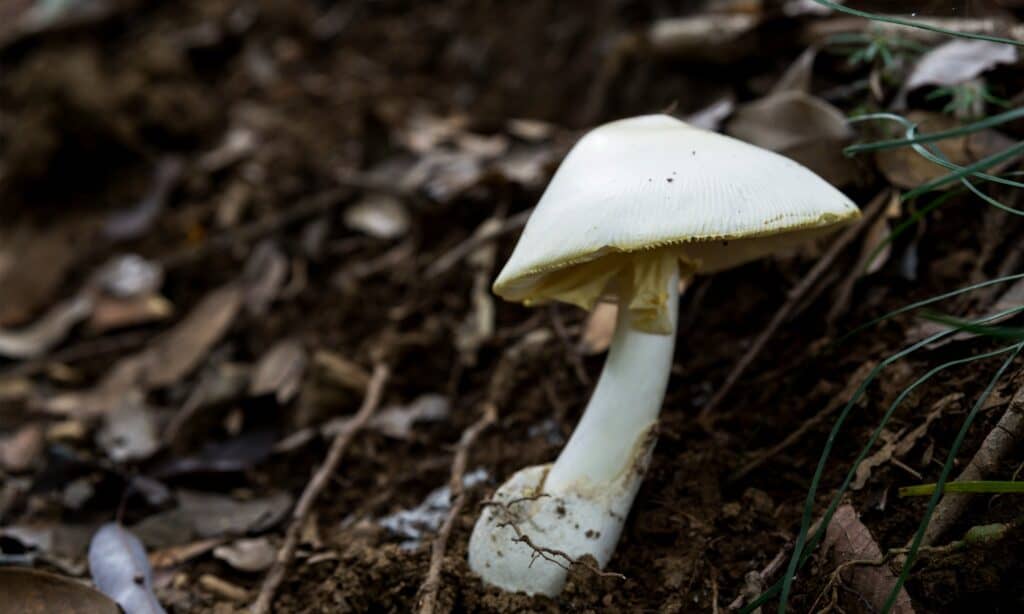
Fool’s mushroom (
Amanita verna)derives its nutrients from the roots of trees with which it has a symbiotic plant-fungi relationship.
©iStock.com/naotoshinkai
How to Identify Fool’s Mushrooms
To identify fool’s mushrooms, you’ll want to pay attention to look for some key identifying features. Many of these characteristics are common to poisonous mushrooms in the Amanita genus. We’ll cover these features in detail below.
Look For an All White Mushroom
The first clue that you may have stumbled upon Amanita verna is an all-white mushroom. This includes the cap, stipe, gills, and veil. The mushroom should have a strikingly white appearance and is often described as ghostly beautiful. On old, mature mushrooms, some caps develop a small bit of tan coloring in the very center of the cap, but overall, the mushroom is considered white.
Check for the Presence of Gills
Like the vast majority of amanita species, fool’s mushrooms have gills, as opposed to pores, teeth, or a smooth spore dispersal surface. These gills will be all-white, crowded, and free from the stipe. This means there’s a thin ring of space between the top of the stipe and where the gills begin to radiate outward. No milky substance should secrete from the gills when they are pressed or crushed.
If you take a spore print by cutting off the cap and pressing it on a dark sheet of paper for a couple of hours, you should see a white, gill-shaped ring of spores.
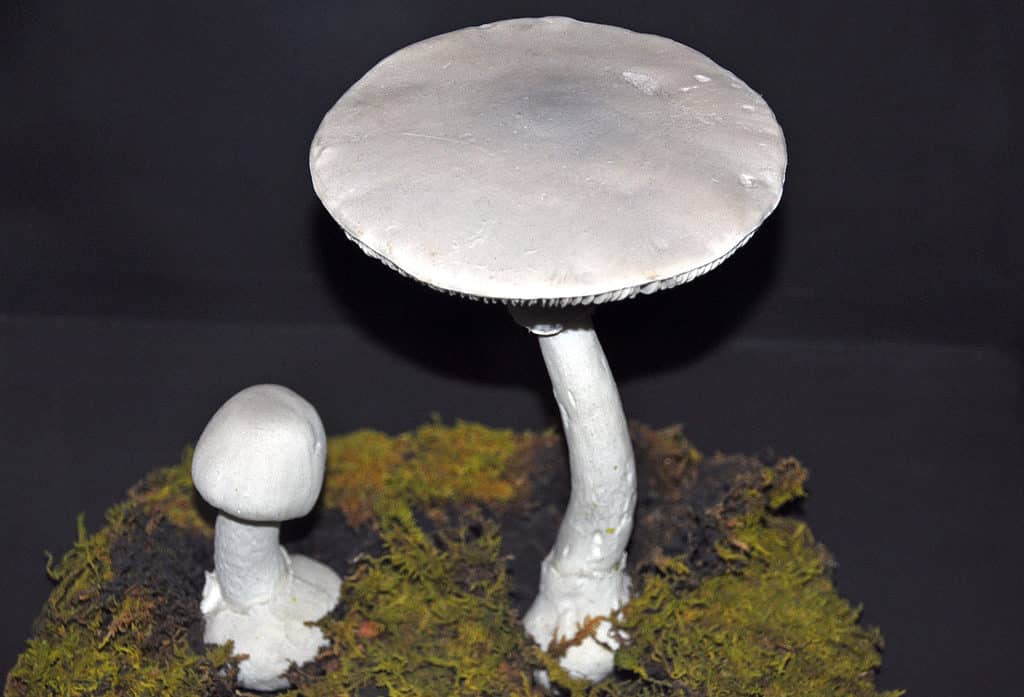
mushrooms are all white including gills, cap, stipe, and veil.
©James St. John / Flickr – License
Look for the Remnants of a Universal and Partial Veil
When Amanita verna is mature, you should see the remnants of a universal and partial veil. These veils protect the mushroom when immature. The universal veil encloses the entire immature mushroom from the cap to the base of the stipe, while the thin, membranous partial veil covers only the immature spore-producing tissue of the mushroom, such as the gills of Amanita verna.
On a mature fool’s mushroom, you’ll see the thin, membranous remnants of the partial veil around the upper portion of the stipe, and a thicker, egg-like structure (called a saccate volva) that encloses the base of the stipe.
If you find this mushroom when immature, it will look like an elongated white egg growing vertically out of the forest floor, as it will be encased by the universal veil. As it grows, the convex cap will break away from the universal veil, although the gills will not be visible as they’re still covered by the partial veil. As the cap grows, expands outwards, and flattens, it separates from the partial veil, leaving only a ringed remnant around the stipe.
Check Out the Stipe
Note that the stipe is the stem-like part of the mushroom. You may see “stipe” and “stem” used interchangeably in some literature on mushrooms. In addition to the ringed remnant of the partial veil and the remnant of the universal veil at the base, you should notice that the stipe is somewhat chalky and tapers upward from the bulbous portion of the base. At maturity, the stipe measures between 4-6 inches tall.
Check the Cap
Depending on the maturity of the fool’s mushroom, the cap will have a convex, disc-like, or disc-like shape with slightly upturned margins. You might see some thin membranous tissue on the cap, which are also remnants of the veil that enclosed it at immaturity. At maturity, the cap is 3-4 inches across. It should look fairly thin and delicate. If you apply the cap with potassium hydroxide (KOH), the cap turns yellow. This is in contrast with some almost identical-looking species, such as Amanita virosa, that do not turn yellow when KOH is applied to the cap.
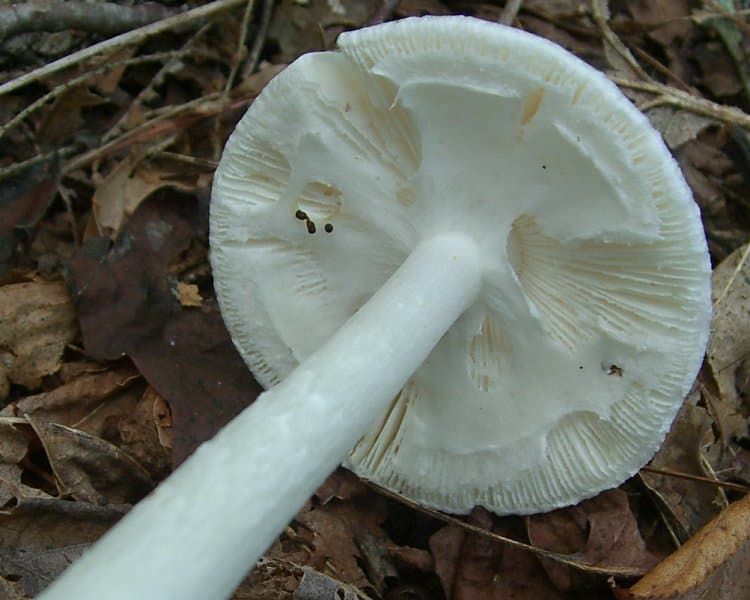
is an almost identical species to the fool’s mushroom but they do not turn yellow when KOH is applied to the cap.
©Jason Hollinger / Flickr – License
What Makes Fool’s Mushroom So Poisonous?
Like its poisonous relatives in the Amanita genus, fool’s mushroom contains amatoxins, which attack the liver of humans and can lead to liver failure and even death. Only about a one-ounce piece of Amanita verna is enough to kill an adult human. The mechanism and timeline of illness are comparable to that of other amanitas containing amatoxins.
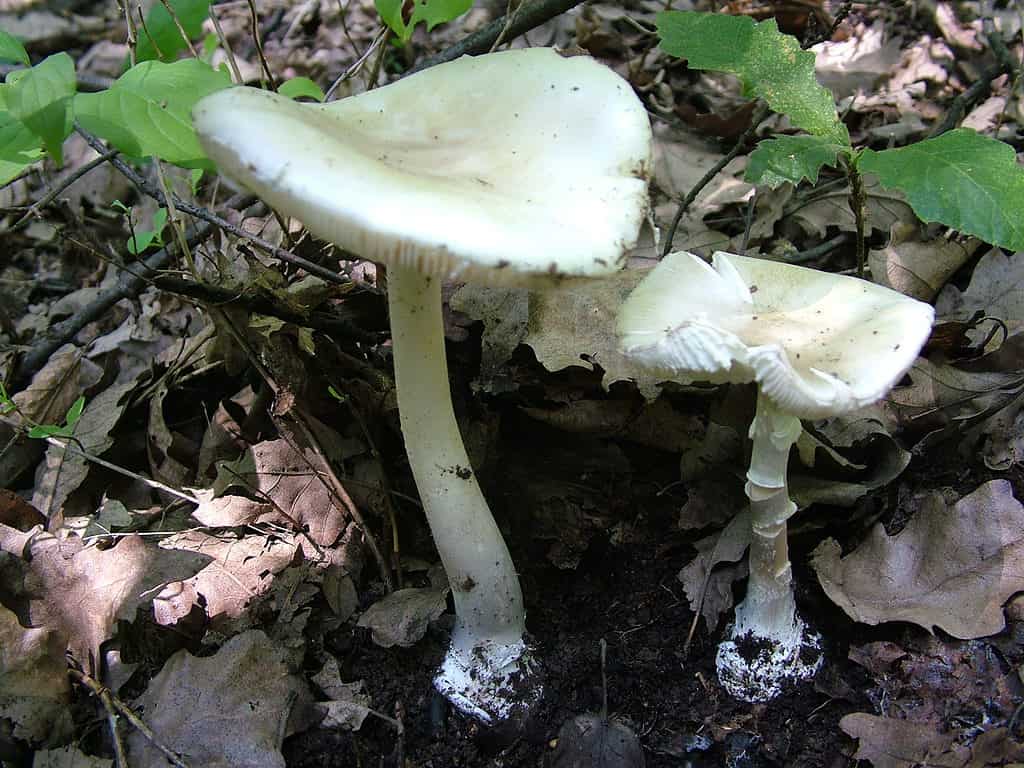
Fool’s mushroom contains amatoxin, which attacks the liver of humans and can lead to liver failure and death.
©Sinisa Radic, CC BY-SA 4.0 <https://creativecommons.org/licenses/by-sa/4.0>, via Wikimedia Commons – License
First, the poisoning victim will experience gastrointestinal distress, vomiting, and diarrhea 6-24 hours after ingestion. This stage of GI sickness typically lasts for two to three days, after which the person may feel ok for a day or so. However, even when not symptomatic, the amatoxin is attacking the liver, and signs of liver failure often appear on days 3-5 after ingestion. At this point, without immediate intervention by a hospital, which sometimes includes a liver transplant, the patient may die.
In the US, The FDA recently approved an extract of a chemical, silibinin, in the herb, milk thistle, for use as an intravenous antidote to amatoxin poisoning. Silibinin works by inhibiting the uptake of amatoxin by the body, blocking it from entering and damaging the liver. In Europe and Asia, the use of intravenous silibinin in hospitals to counteract amatoxin poisoning has been in practice for decades. Interestingly, people have used milk thistle for centuries in herbal medicine as a treatment for liver diseases and acute liver damage.
Up Next
- Beech Mushrooms: A Complete Guide
- False Morel Mushrooms: A Complete Guide
- 10 Wild Mushrooms Found in Winter
The photo featured at the top of this post is © gvictoria/Shutterstock.com
The information presented on or through the Website is made available solely for general informational purposes. We do not warrant the accuracy, completeness, or usefulness of this information. Any reliance you place on such information is strictly at your own risk. We disclaim all liability and responsibility arising from any reliance placed on such materials by you or any other visitor to the Website, or by anyone who may be informed of any of its contents. None of the statements or claims on the Website should be taken as medical advice, health advice, or as confirmation that a plant, fungus, or other item is safe for consumption or will provide any health benefits. Anyone considering the health benefits of particular plant, fungus, or other item should first consult with a doctor or other medical professional. The statements made within this Website have not been evaluated by the Food and Drug Administration. These statements are not intended to diagnose, treat, cure or prevent any disease.
Sources
- Amanitaceae.org, Available here: http://www.amanitaceae.org/?Amanita+verna
- Healing Mushrooms, Available here: https://healing-mushrooms.net/amanita-verna
- Centers for Disease Control and Prevention, Available here: https://www.cdc.gov/mmwr/volumes/66/wr/mm6621a1.htm
- UC Santa Cruz, Available here: https://news.ucsc.edu/2017/03/mitchell-todd-alumni-profile.html
Thank you for reading! Have some feedback for us? Contact the AZ Animals editorial team.



